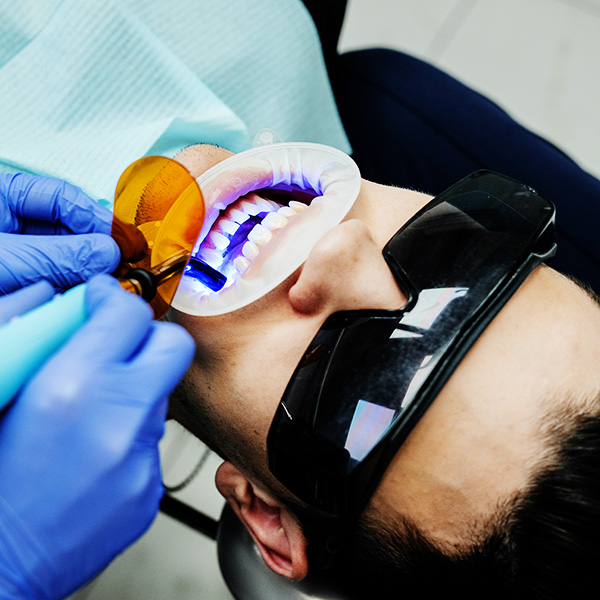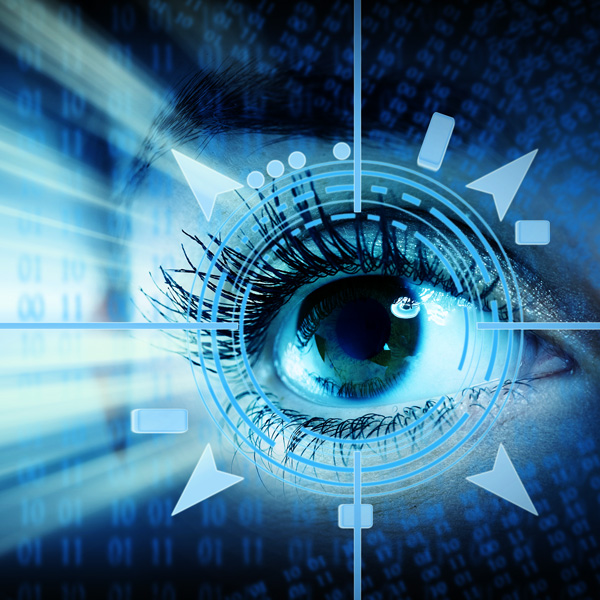
Blue light protection for elderly – is it necessary?
New studies show a connection between blue light and the development of cataracts. In today’s digital era, we are constantly surrounded by screens and modern

Blue light has different physical and biological properties that have various effects on health. Some of these are easy to demonstrate directly, such as the influence of common amounts of blue light on the production of the sleep hormone melatonin. This is because this is an acute effect of light, and hormone levels can be measured easily and without danger to the subject.
Detection of acute cell damage caused by strong blue light is more difficult. In this area, the mechanisms have been researched through animal experiments and in vitro studies (experiments on cell cultures); however, studies on humans are not ethically justifiable.
Things get even more complex when it comes to the scientific study of long-term damage from chronic exposure. Similar to how skin aging can result from excess UV radiation, it is plausible to expect that prolonged exposure to blue light can lead to cellular damage in the retina. But how can this connection be verified?
In this blog post, we will take a closer look at the various effects of blue light, and link to the relevant study results. Unless otherwise stated, these studies are published in English, and in some cases only summaries are freely available.


For millions of years, there was only light day and dark night for humans. And so it makes sense that our internal clock is controlled by light. Since absolute brightness depends not only on the time of day, but also on environmental factors, the internal clock is controlled by blue light. This is because the spectral composition of daylight changes during the course of the day. While there is a lot of blue at noon, it gradually becomes less as the sun gets lower and lower, culminating in a romantic sunset red.
The main action spectrum for the control of the endocrine system (e.g. suppression of melatonin production) is in blue range between 455 and 539 nm.

The human body exists in a 24-hour rhythm. Not only sleep and wake cycles are controlled by the internal clock. Blood pressure and hormone levels are also subject to change during the course of the day. The trigger for this cycle is naturally the daylight. However, this study shows that blue-containing artificial light is a stronger timer.
For this study, a small group of participants were exposed to light from blue-emitting LED lamps of various intensities in the middle of the night. By measuring the level of melatonin in the blood before and after light treatment, it was clearly shown that melatonin suppression by blue light is dose-dependent.
This study shows (in a small group of female participants) that bright artificial light in the morning, shortly after awakening, has a clearly measurable effect on various hormones of the reproductive system, thus explaining older findings that have shown a relationship between artificial light exposure and the menstrual cycle.
So blue light is not only relevant for sleep.

Light has exercised the great thinkers of physics since Antiquity, and by no means have all the mysteries been unraveled. However, some correlations have been quite clearly explored, such as the relationship between photon energy and wavelength. In short, the individual photons of short-wave light (UV light, blue light) have a higher energy charge than those of long-wave light (red and infrared). It is this high energy that makes the light dangerous. When it meets cells, free oxygen radicals are produced and cell damage occurs. This is referred to as phototoxicity.


This study, which is also freely available in full text, examined the effects of light of different wavelengths on cells in cell cultures. Using markers of oxygen free radical production, quantification of cell death, and examination of cell membranes, the authors conclude that the most severe damage is caused by blue light.
For this study in mice, a blue light filter was applied to the light used (94% filtering efficiency in the 400-500nm range). The mice exposed to filtered light suffered significantly less damage than the group exposed to unfiltered light, but more than the unirradiated control group.
This meta-analysis (review study of previously published papers) summarizes the facts known so far like this: Blue light causes photochemical damage in the eye; especially on the retina and on the surface of the vitreous body. The main mechanisms involved are oxidative stress and damage to mitochondria; blue light filters and antioxidants are listed for prevention and treatment.

New studies show a connection between blue light and the development of cataracts. In today’s digital era, we are constantly surrounded by screens and modern

Screen glasses with blue light filters, which are recommended for working on a PC, would allegedly not offer much added value. This is the result

The PRiSMA® BluelightProtect LiTE95 filter glasses can be described as the UNIVERSAL filter with a true 95% blue light filter rate in the 400 to
